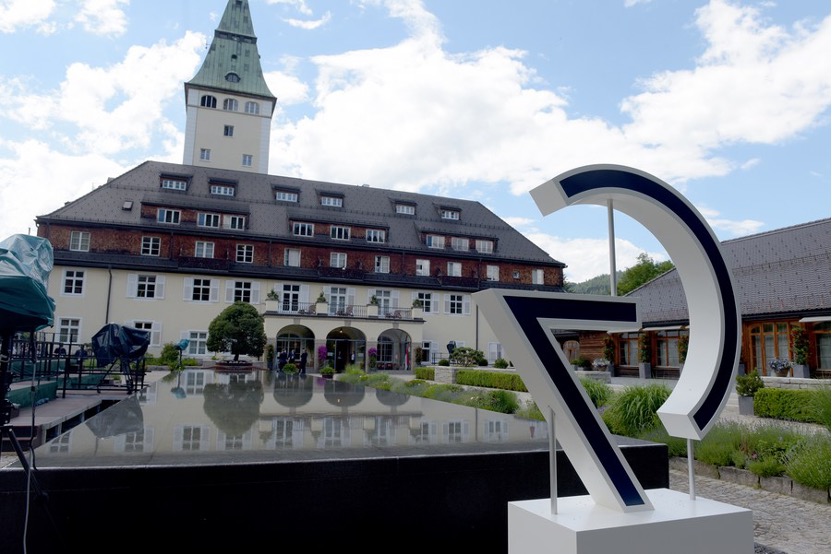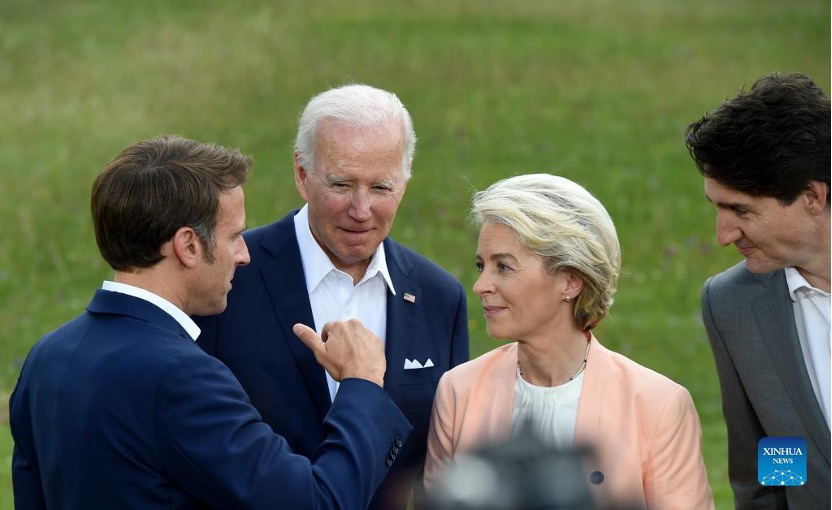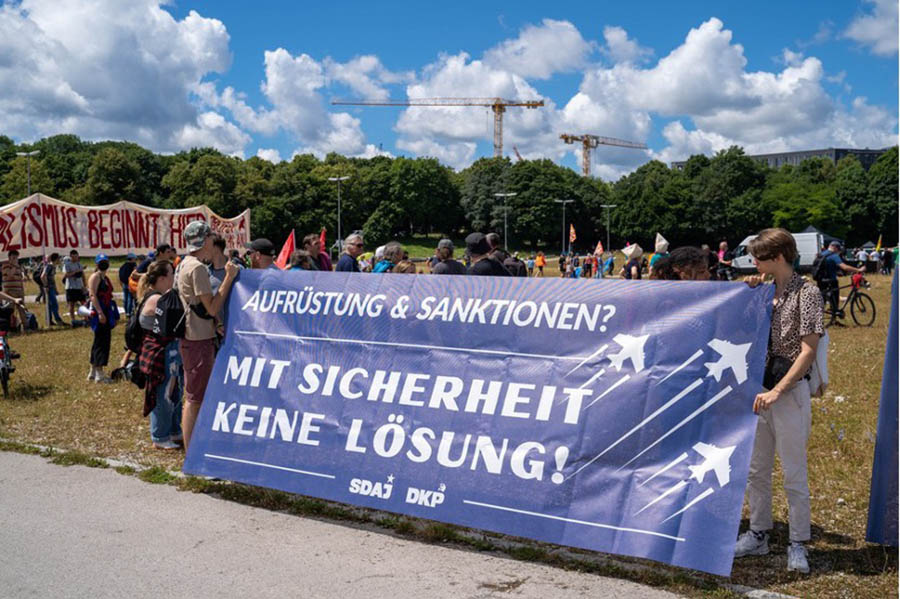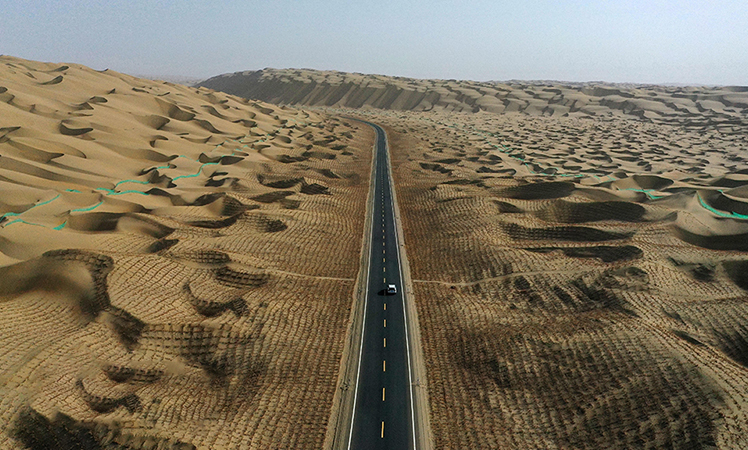Aiming to counter China’s influence, G7’s infrastructure initiative risks turning West’s vision into yet another delusion

Photo taken on June 26, 2022 shows the Schloss Elmau in south Germany's Bavarian Alps. (Xinhua/Guo Chen)
At this year's Group of Seven (G7) summit, leaders from the bloc of industrial economies launched a new "Partnership for Global Infrastructure and Investment" (PGII) initiative, pledging to raise $600 billion in funds over the next five years to finance much needed infrastructure and development projects in developing countries around the world.
The bloc’s most recent global infrastructure initiative takes direct aim countering China’s Belt and Road Initiative (BRI) and has therefore raised a serious question: Can this clique of Western economies, motivated by their respective phoney “democratic values,”actually provide the globe, and especially developing nations, with the much-needed infrastructure hoped for?
In response to the G7’s announcement, Zhao Lijian, spokesperson of China’s Ministry of Foreign Affairs, stressed on Tuesday that Beijing always “welcomes initiatives that promote global infrastructure,” adding that “such initiatives do not have to cancel each other out.” At the same time, China only opposes “moves to advance geopolitical calculations and smear the BRI in the name of promoting infrastructure development.”
“I also noticed that a year ago, it was also at a G7 Summit that the US put forward the Build Back Better World (B3W) initiative. The US committed then to developing global infrastructure in a different way from the BRI. Whether it is B3W or any other initiative, the world wants to see real investment and projects that will truly deliver for the people,” said Zhao.
Vision or delusion?

(From L to R) French President Emmanuel Macron, U.S. President Joe Biden, European Commission President Ursula von der Leyen and Canadian Prime Minister Justin Trudeau are pictured during the Group of Seven (G7) Summit in Schloss Elmau in south Germany's Bavarian Alps on June 26, 2022. Leaders of the G7 kicked off their three-day annual summit on Sunday in Schloss Elmau in south Germany's Bavarian Alps amid lower expectations and protests. (Xinhua/Guo Chen)
This isn't the first time the US and its other G7partners have pledged to counter China's BRI. The B3W, which Zhao referenced in his remarks, provides the most immediate example of how the G7's grand ambitions for supporting the development of global infrastructure ultimately turned into a pipe dream.
In his first trip abroad as the US president, Biden urged G7 leaders to support the B3W as a counterforce against China's financing of infrastructure projects around the world.Since then, his advisers had continued to work on the initiative, mostly without any fanfare. There was little tangible progress to herald, while some lawmakers, including Democratic Senator Joe Manchin of West Virginia, balked at the cost.
While B3W received a cold reception in the US, other G7 nations showed a similar lack of enthusiasm. Immediately following the launch of the B3W initiative, the EU unveiled its “Global Gateway”, a 300-million-euro infrastructure fund for developing nations that is expected to see investments trotted out between 2021 and 2027. Outside of the EU, the UK started its own infrastructure project called the Clean Green Initiative.
Different infrastructure initiatives among G7 nations have undermined what the Western bloc might otherwise achieve in terms of delivering for developing countries. At the G7 meeting on Sunday, Olaf Scholz, the German chancellor, alluded to the confusion by saying that it would be better for the G7 countries to show off what they have to offer all under one roof.
Seemingly to eschew the US’ already failed B3W brand, the G7's PGII has unveiled a sensible agreement to raise 600 million dollars’ worth of investments, far less than the B3W's assessment of approximately 40 trillion dollars in infrastructure needs for the world’s developing countries.
"Looking back at what we've seen, every iteration of an American-led response to the Chinese infrastructure project has underperformed," Gyude Moore, a former minister of public works in Liberia, told NPR.
In addition to the G7’s various and confusing infrastructure plans, its constant failure in keeping its promises have also made the new infrastructure plan less credible.
The G7 nations pledged 12 years ago to "raise and improve" their contributions to spend $100 billion annually to aid developing countries in adapting to climate change. Only Canada and Germany made concrete commitments, with Canada doubling its commitment to 4.4 billion dollars over the next five years and Germany meanwhile promising to raise its spending by 2 to 6 billion euros annually by 2025, according to a report by the Independent.
"I really, really want to be hopeful, I do," said Moore. "It's just — looking at everything as it exists, it's difficult to imagine what rabbit they are going to pull out of this hat."
Cooperation vs. Antagonism

People take part in a demonstration in Munich, Germany, on June 25, 2022 to protest against Group of Seven (G7) summit. (Xinhua/Ren Ke)
In the beginning, there were six. At the Château de Rambouillet near Paris in 1975, the major Western industrialized countries, namely France, Germany, US, UK, Italy and Japan, came together to discuss the world economy at a time beset by high unemployment, rampant inflation and energy woes. It became the Group of Seven when Canada was added the following year.
Though the world still faces the same challenges as it did decades ago, a lot has changed between Rambouillet and the group’s 48th summit in Schloss Elmau, Germany, as held from June 26-28. Back in 1975, those few countries produced around 62% of the world’s GDP; their share has since shrunk to about 45%.
Along with the G7's declining global economic share, the club's lineup of seven Western nations, the foundation of which is a cold war mentality, now seems outdated, especially given the considerable harm that the COVID-19 pandemic has caused to the global economy, particularly in developing countries.
The G7's ultimate goal, notwithstanding the failure of its infrastructure initiatives, is not to help developing countries but to restore the West's reputation as a united and powerful international actor.
However, leaders of the G7 are incapable of restoring the group's diminished heft simply by attacking China's BRI, as that would turn mutually beneficial cooperation into nothing but a sour antagonism.
While they have talked about their new infrastructure plans worldwide, countries in Latin America, Asia and Africa haven't seen much action.
"Whenever they talk to American officials, they say, 'Well, if you don't want us investing in China, give us an alternative. Right? If you don't want us tying up with Beijing, and all this money they're offering, well, where else are we supposed to go? You don't have anything else.' So this is meant to be that," Ian Bremmer, president of Eurasia Group, an international consulting firm, told NPR.
"And there's only one problem, which is that we don't actually have the money to fund it," he said.
Compared to the G7's infrastructure ambitions, the BRI has benefited developing nations worldwide significantly, particularly during the pandemic.The World Bank estimates that by 2030 if all BRI transport infrastructure projects are completed, the BRI will produce $1.6 trillion in annual income for the world or 1.3 per cent of the global GDP. The BRI could help lift 7.6 million people out of extreme poverty and 32 million out of moderate poverty from 2015 to 2030.
Instead of criticizing China for creating the so-called "debt traps," Mohan Munasinghe, head of the presidential expert commission on the Sustainable Sri Lanka 2030 Vision, told People's Daily Online that developing countries could strengthen their collaboration with China depending on their countries' individual situations.
“With improved governance, better political stability and help from friendly countries like China, the macroeconomic situation in Sri Lanka can recover within 1-2 years …The BRI is important for recovery from the current crisis and for promoting future growth and sustainable development prospects,” said Munasinghe.
Photos
Related Stories
Copyright © 2022 People's Daily Online. All Rights Reserved.









